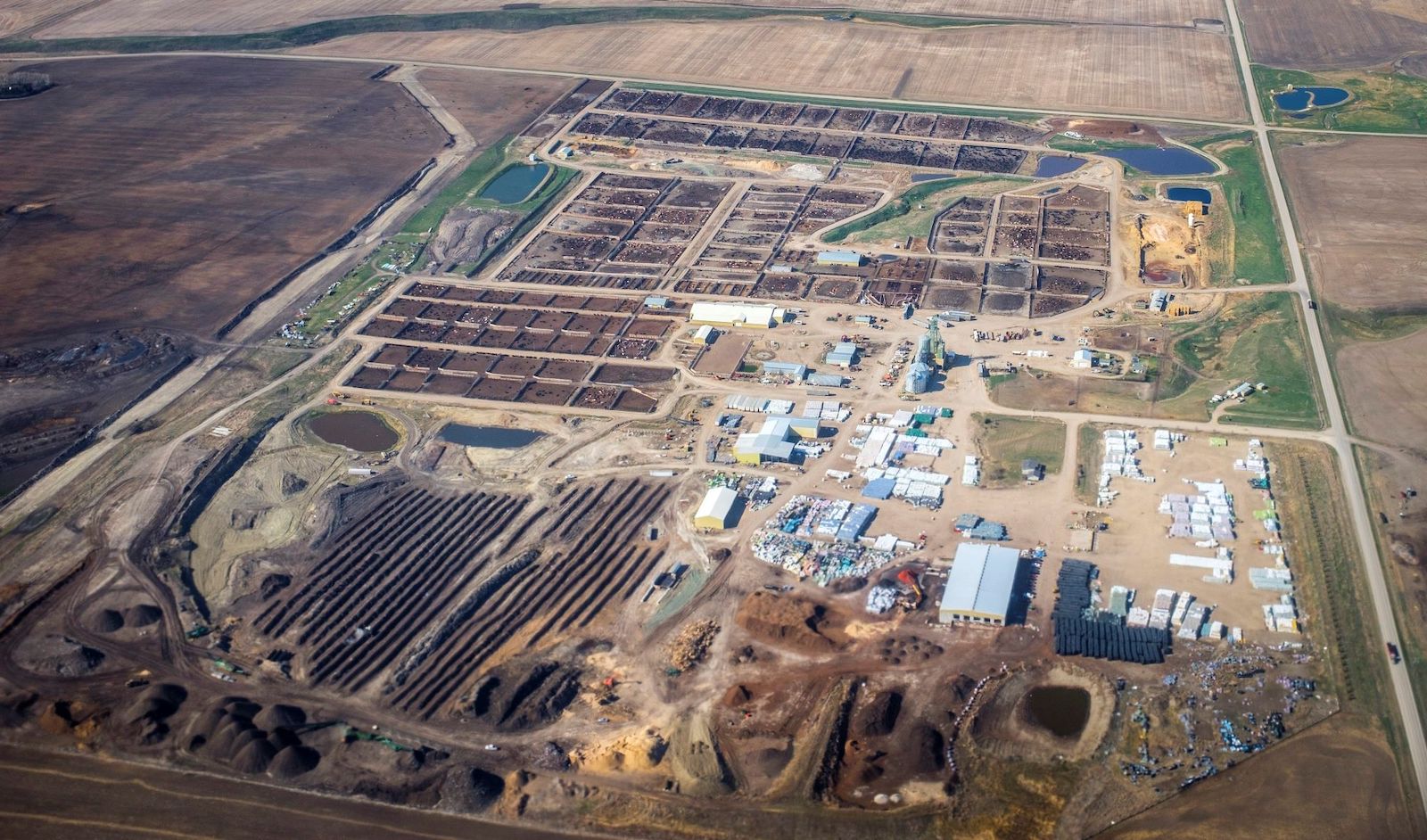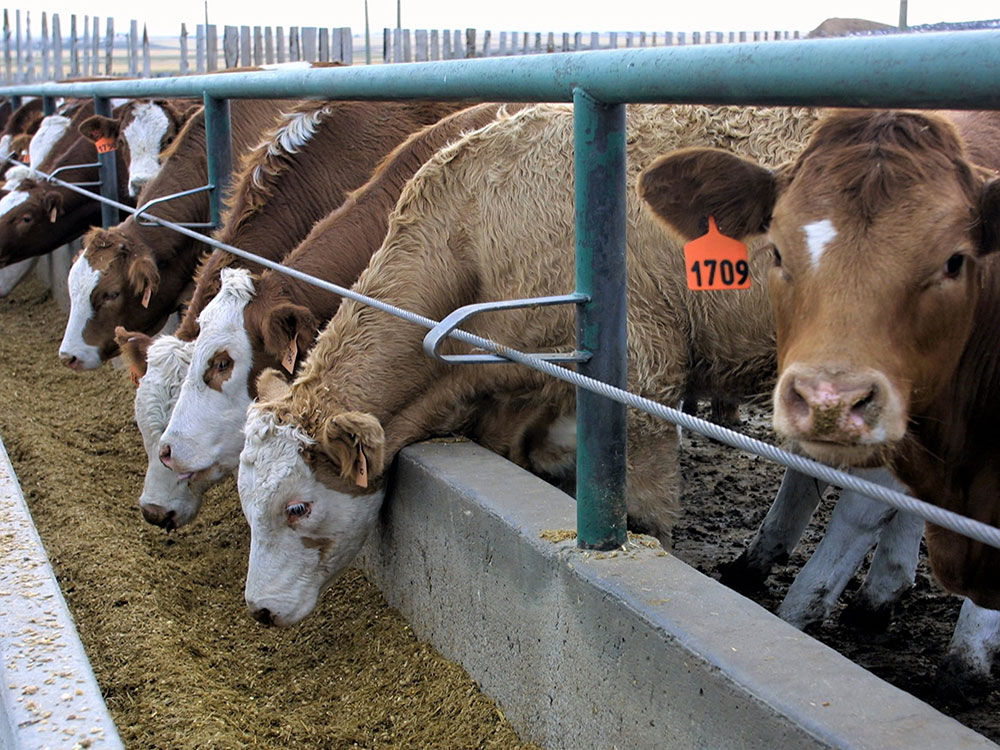“Modern technology has become a total phenomenon for civilization, the defining force of a new social order in which efficiency is no longer an option but a necessity imposed on all human activity.” — Jacques Ellul
In early September a biological bomb exploded in Calgary changing the lives of more than 300 children and their families.
The unwitting bomb assemblers worked at a cockroach-infested kitchen called Fueling Minds that supplied “real ingredients” to seven related daycare centres called Fueling Brains and four other institutions.
One of the “real ingredients” was Shiga toxin producing E. coli O157, or STEC, a deadly, relatively new food and water borne pathogen that emerged in the 1980s. It primarily and harmlessly resides in adult cattle and spreads via their prolific manure.
The Shiga toxin is classed as a bioterrorism agent by the U.S. Centers for Disease Control and Prevention and for good reason. It can cause bloody diarrhea, kidney failure, seizures and other organ damage. As few as 20 organisms can change a person’s life. The pathogen can survive freezing, resist drying and even survive unscathed in acidic environments or cold water.
The pathogen not only contaminates meat but a variety of leafy greens. It can be transmitted from person to person via unwashed hands.
STEC is particularly hard on children and the elderly. About one in 20 people infected develop severe renal failure known as hemolytic uremic syndrome, or HUS. The toxin can also target other organs such as the gut and the brain resulting in life-long complications.
No known cure exists for HUS. Management of the condition relies on rehydration, transfusions, anti-hypertensive medications or dialysis machines.
So when the STEC bomb went off in Calgary, pandemonium followed. Children with bloody diarrhea, fever, chills and vomiting packed the hospitals and emergency wards. Pediatricians sounded alarm bells. Parents fretted day and night. Daycares closed. In the end about 20 children under the age of five required dialysis because the toxin had shut down their kidneys.
The Alberta government did not say a word about the emergency until a week had gone by. That’s when it revealed that the central kitchen was the most likely source.
Public health reports said that the Fueling Minds kitchen hosted cockroaches, an ineffective dishwasher, poor temperature control for food transport, a disinfectant spray improperly mixed and a history of violations. (And yes, cockroaches can carry the deadly pathogen too.)
But in addition to the practical failure of government, the whole sorry episode illustrates the growing fragility of a high-tech food system that bows to industrial efficiency and concentrated production.
The problem with corn-fed cattle factories
We tend to assume modern efficiencies guard us from old-fashioned risks. In this case, we’ve created new ones. Thanks to our obsession with a big, fast and global food system, however, food poisoning is a constant bane. Systems that crowd animals and create mountains of dung can’t help but efficiently invite larger populations of ever-evolving microbes. Every year food poisoning affects about 11 million Canadians and that figure is on the rise. STEC ranks in the top 10.
As such, Calgary’s grim outbreak, Canada’s biggest since the Walkerton debacle, is not an anomaly. It merely underscores how the quest for bigger and faster comes with unintended consequences and high public health costs. It is also what happens when everything becomes a technical means, and the human ends disappear.
Once upon a time E. coli, a ubiquitous and well-studied bacteria, was never a hazard. Yes, it caused the occasional bouts of diarrhea but nothing life-threatening. In fact, this mostly beneficial bacterium has lived long in the human intestine as well as the rumens of cattle with little fanfare. It can also be found in sheep, goats and turkeys.
But that all changed nearly 50 years ago when North America developed a feedlot system for cattle. Instead of raising and finishing small herds of ruminants on a natural grass diet, efficiency experts concluded that a diet of corn or grain (hey, it was cheap and subsidized) grown on irrigated land could put a well marbled beef steak on the plate in a much faster timeframe.
The industry failed to consider that there might be major ecological and health consequences to overcrowding 100,000 cows on to a few acres, let alone fattening them with an artificial diet. Corn was simply a means to produce more happy meals.
The feedlot also symbolized the triumph of a complex mix of technologies. These techniques included “cattle procurement, cattle receiving, cattle processing, daily cattle observations, health treatments, cattle marketing, feed procurement, feed commodity receiving, feed commodity storage, diet formulation and diet delivery” and so on.
The whole system gorged on bigness. Energy intensive feedlots efficiently supplied cheap meat to the big slaughterhouses. The big multinationals then provided cheap hamburgers (often containing the meat of 100 different cows) to the fast-food outlets.
The corn diet, however, not only damaged cow livers but also acidified the rumen of cattle. At some point E. coli bacteria then evolved and mutated to withstand this acid bath. As a result, whenever the new Shiga toxin-producing bacteria entered humans’ guts, it could now withstand a gastric shock and release its poison, damaging human organs.
“The story of this pathogen really illustrates the ecological links between the health of these animals and the health of us,” recently explained U.S. writer Michael Pollan. “I was surprised to learn that E. coli O157 is relatively new — it wasn't isolated until the early 1980s — and that it essentially doesn't exist in the gut of animals that eat grass. It is a problem associated with feeding animals corn.”
Indeed, researchers have established a direct link between the volume of the nasty bacteria shat out by cattle and their feed. Studies showed that cattle fattened on grain as opposed to grass frequently harboured greater populations of E. coli O157.
Other studies documented that feeding cattle distilled grain (the byproduct of ethanol production) also encouraged the survival of E. coli O157 in cow shit. A 2007 Kansas State University study revealed, for instance, that cattle served distilled grain were more than twice as likely to shed E. coli O157 in their feces, compared with cattle that didn't eat the ethanol byproduct. But ethanol plants are often built next to feedlots to provide economic and efficient feed.
Researchers also demonstrated that switching to a hay fed diet reduced E. coli numbers by 1000-fold in feedlot cattle before their slaughter. But it wasn’t deemed an economically prudent solution. Corn is cheaper than hay.
As a consequence, about 30 per cent of all feedlot cattle now shed E. coli O157. Some cows even act as superspreaders in a feedlot. According to researchers, genetically diverse subpopulations of E. coli in cattle now appear to shift in composition and abundance over time.
The steady march of E. coli O157
Meanwhile the study of the evolution of E. coli O157 and 150 other strains of non-Shiga toxin producing E. coli that also cause disease, has become a full-time research industry.
So thanks to the proliferation of feedlots and their hefty piles of contaminated manure, STEC exploded and then spread like an invasive weed via groundwater, lakes and irrigation canals.
Doctors started to record the first biological casualties and mayhem in the 1980s. That’s when medical journals reported the very first cases of patients with severe bloody stools in the cattle-dense states of Washington and Oregon. The sick had eaten contaminated hamburgers. By 1983 doctors had confirmed that the pathogen can ruin kidneys and cause HUS.

From here the pathogen evolved swiftly and moved rapidly. In 1992 an outbreak of the pathogen rattled the residents of Arviat in the Canadian Arctic. There it gave 65 people explosive diarrhea and resulted in 19 HUS cases. The pathogen spread person to person among families in crowded housing.
By 1993 STEK had found its way into Minnesota daycare centres where it infected and sickened kids only 26 months old. HUS remains today the leading cause of kidney failure in children.
As the pathogen declared itself in one outbreak after another, the cattle rich province of Alberta documented some of the highest rates of STEC infections on the continent.
Most of the cases occurred in southern rural Alberta where the feedlot industry first arose near Lethbridge.
One 2011 study concluded that HUS in southern Alberta “continues to be two- to threefold higher than what has been reported in the rest of Canada, and most other regions of the U.S. and Europe.” (Argentina, which now raises much of its famous beef in feedlots, has the highest HUS incidence in the world.)
Many outbreaks have made big news and even bigger lawsuits. In 1993 the pathogen exploded in a number of Jack-in-the-Box restaurants and thereby became known as “the hamburger disease.” That outbreak resulted in 501 cases, 171 hospitalizations, 45 cases of HUS and four deaths in Washington state. Additional cases appeared in California, Nevada and Idaho. An investigation exposed that restaurant served inadequately cooked beef.
In 1996 a series of outbreaks rattled Japan including two clusters at a school and a factory caused by contaminated radish sprouts. All in all, 10,000 Japanese citizens and children were infected during 14 separate outbreaks that year.
In 2000 the deadly pathogen unsettled the community of Walkerton, Ontario. Here a number of factors converged: rising livestock density in rural Ontario met an extreme weather event which, in turn, contaminated a water well with E. coli O157 that supplied the local municipality. At the same time this biological hazard collided with poor watershed protection compounded by institutional inertia and budget cuts. The result killed seven people and seriously sickened 2,300 with bloody stools.
How industry has responded
In response to the growing mayhem, the feedlot industry has experimented with new technologies including vaccines. Slaughterhouses introduced new hide-cleaning tools and experimented with irradiation.
But as Micheal Pollan has noted none of these technological fixes addressed the central problem: the industrial concentration of animals fed an unnatural diet: “All of these solutions treat E. coli O157:H7 as an unavoidable fact of life rather than what it is: a fact of industrial agriculture,” said Pollan.
Alberta researchers underscored the relationship between cattle, cattle density and outbreaks of HUS in that province in a 2019 article in the journal Toxins. They bluntly reported that the majority of deadly Shiga toxins isolated from humans in Alberta “share the same lineage and same Shiga toxin genotype with isolates from cattle.” They added that climate and weather modulated the complex interaction with human infection over the seasons.
The journal warned that “In association with cattle farming, contamination of the watershed in Alberta’s southernmost region has been documented to affect irrigation water, thereby also extending the STEC O157 contamination potential to produce and recreational waters. Environmental contamination may provide an alternative path for infection other than the ingestion of contaminated meat. Efforts targeting animal health and the environment are clearly required to limit the STEC O157 burden on human health.”
In recent years STEC has progressively broadened its scope (and strains) to poison a diversity of food. Beef now only accounts for half of foodborne poisonings. The deadly bacteria has been found in leafy greens, sprouts, raw cookie dough, raw milk, unpasteurized apple juice, strawberries, raw celery (in a hospital) cucumbers, hazelnuts and even soy nut butter.
Investigators traced one 2018 romaine lettuce STEC outbreak back to a 100,000 beef feedlot located next to an irrigation canal.
The wages of ‘efficiency’
In September the industrial pathogen arrived in Calgary. It erupted at a complex juncture where the industrial food system merged with an industrial child-rearing system. Efficiency dominates that system too.
Parents who pursue two full-time paycheques to make ends meet turn to professional child-care operations, which in turn find it more efficient to have one large kitchen serve 11 daycares than to have each to make their own food.
Of course, we take for granted that in daycares children are exposed to a continuous stream of stomach and respiratory tract infections. One medical journal offered this lingo-rich observation: “Aggregation of young children [think crowding here] potentiates transmission of organisms that can produce disease in other children, adult care providers, parents and community contacts.”
In fact medical records show that outbreaks of diarrhea occur at a rate of approximately three per year per child-care centre, caused by organisms including E. coli O157. Some of the preschool children, many in diapers, will act as superspreaders too.
The public health costs of daycare centres are substantial but rarely discussed any more than feedlots. Disease spread by industrial daycare systems result in increased antibiotic use and antibiotic resistance. The economic burden of illness probably costs the economy more than $2 billion a year, based on calculations published in a medical journal.
But this shouldn’t be a concern, concluded the same review, because “these arrangements facilitate opportunities for socialization and enable primary caregivers to be employed outside the home.”
The result is a complexifying system of child-rearing that interfaces with our highly complexified means of feeding our kids and ourselves.
A vast and intricate industrial system with little accountability has given us cheap food but at high cost to public health and animal welfare. To keep the pathogen under control now requires an army of experts from multiple disciplines including epidemiology, animal ecology, food safety, clinical microbiology, gastroenterology, nephrology, infectious disease, toxicology, bacterial pathogenesis, cell biology and immunology.
Years ago, the ecologist Charles Elton sounded a warning about our growing biological vulnerability and insecurity. “We are living in a period of the world’s history when the mingling of thousands of kinds of organisms from different parts of the world is setting up terrific dislocations in nature.”
He predicted that the mayhem, all driven by technical means and trade, would produce a constant stream of “unforeseen emergencies.”
Until society presses for a more accountable and local forms of food production where small is beautiful and limits are observed, the corporate system will efficiently churn out mass quantities of meat and produce, some of it laced with E. coli O157 and other pathogens including norovirus and salmonella.
Paradoxically, it will also habituate people to more food poisonings. Once again, we are expected to get used to living through a string of unending emergencies. These, we are told, are just the price of progress. ![]()

















Tyee Commenting Guidelines
Comments that violate guidelines risk being deleted, and violations may result in a temporary or permanent user ban. Maintain the spirit of good conversation to stay in the discussion and be patient with moderators. Comments are reviewed regularly but not in real time.
Do:
Do not: